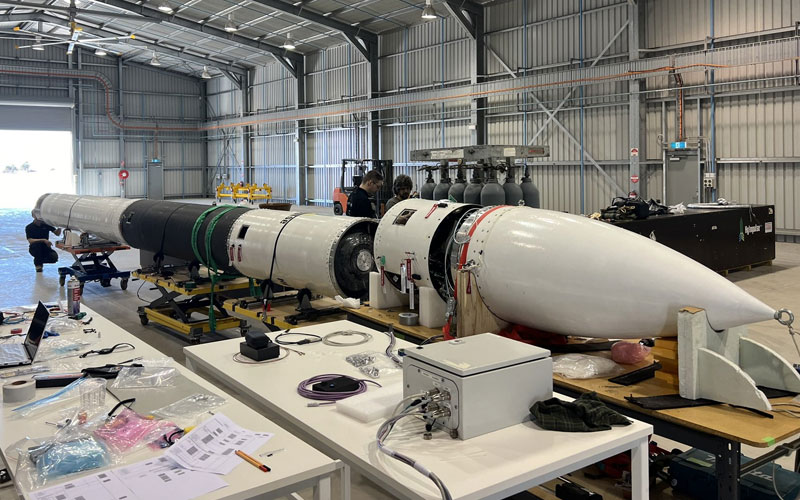
German launch company HyImpulse announced 22 April that its first suborbital SR75 rocket had arrived in Australia ahead of its maiden flight.
The SR75 is a single-stage suborbital rocket designed to carry payloads of up to 250 kilograms to a maximum altitude of around 200 kilometres. It’s powered by the company’s HyPLOX-75 hybrid rocket motor that utilizes candle wax and liquid oxygen to produce thrust.
On 23 February, HyImpulse revealed that the first flight-ready version of its SR75 rocket had begun its journey by sea from Germany to its launch site in Australia. Initially, the company had planned to launch the maiden flight of its SR75 rocket from SaxaVord in the United Kingdom. However, after the construction of the UK-based launch facility was delayed, the company was forced to look for an alternative. In November 2023, HyImpulse announced that it had selected the Southern Launch Koonibba Test Range in Australia.
Following the 22 April announcement of the rocket’s arrival in Australia, HyImpulse revealed on 23 April that it had already begun operations to integrate the various elements of the rocket and to set up the mobile ground systems.
On 28 February, Southern Launch, the commercial outfit that manages the Koonibba Test Range, revealed that a launch attempt of the suborbital SR75 rocket would occur between late April and early May. This likely gives the team little room for the unexpected as it prepares for launch.
The SL1 rocket comes next
While HyImpulse is expected to offer the SR75 rocket as a standalone product, it will also serve as a test bed for key systems that will be used aboard its larger SL1 rocket.
The three-stage SL1 rocket will be approximately 33 metres tall and will be capable of delivering payloads of up to 600 kilograms to low Earth orbit. The company will also offer the option to equip the rocket with a kick stage called HyMOVE. According to the company, HyMOVE will offer a diverse set of mission applications.
One of the most important elements shared by both the suborbital SR75 rocket and SL1 is the HyPLOX-75 hybrid rocket motor. While the company’s suborbital rocket only uses one HyPLOX-75 motor, the SL1 first stage will feature a cluster of eight motors, and the second stage will feature a cluster of four.




